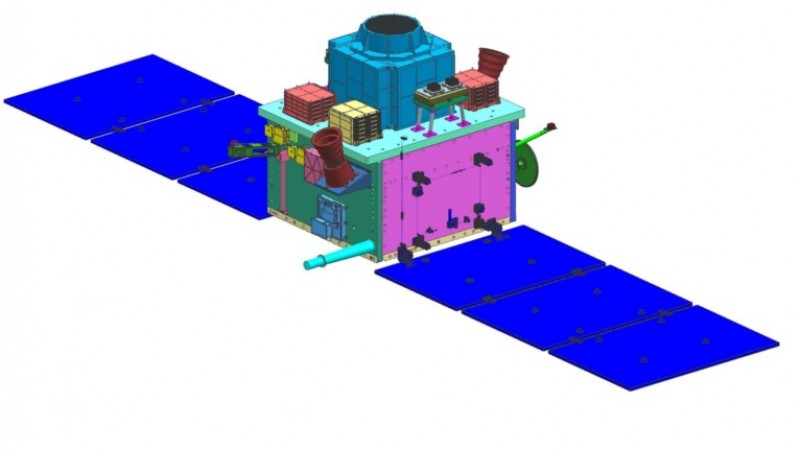
BANGALORE: In the wake of the exiting Chandrayaan 3 and Aditya L1 missions, the Indian Space Research Organisation (ISRO) is set to captivate the world with the forthcoming launch of the X-ray Polarimeter Satellite (XPoSat). Since its meticulous preparations began in August, this groundbreaking satellite has been poised for its celestial journey. Speaking at a public lecture hosted by the Indian National Science Academy (INSA), ISRO Chairman S. Somanath unveiled the timeline for the XPoSat mission, stating, "This new satellite is now fully assembled and primed for launch, with the tentative launch window targeted for December."
XPoSat boasts an array of sophisticated payloads on board. The primary instrument, the Polarimeter Instrument in X-rays (POLIX), is engineered to meticulously gauge both the degree and orientation of X-ray polarization. Complementing this is the secondary payload, the X-ray Spectroscopy and Timing (XSPECT) instrument. Together, these two cutting-edge instruments will engage in extensive and persistent scrutiny of some of the universe's most enigmatic phenomena, generating crucial data on temporal fluctuations. Throughout its planned five-year mission duration, XPoSat is expected to scrutinize approximately 40 X-ray sources.
To grasp the concept of polarized light, envision the undulating waves along a skipping rope held at both ends. In unpolarized light, these waves move in diverse directions, akin to the whims of the wind. Conversely, polarized light exhibits waves traveling along a singular orientation or plane. Natural light, originating from sources like stars or light bulbs, typically remains unpolarized and propagates along multiple planes.
Polarized light emerges when light traverses or reflects off various media, be it a cloud of gas, the surface of a tranquil lake, snow-clad mountain peaks, or the headlights of an automobile. Polarized sunglasses, for example, effectively shield our eyes from the blinding glare of polarized light by selectively filtering it out. POLIX, on the other hand, is uniquely equipped to measure critical attributes of polarized X-rays emanating from distant luminous sources, concealed by shrouds of obstructive gas and dust.
The brilliance of XPoSat lies in the complementary nature of its two instruments, each enriching the data collected by the other. This symbiotic relationship empowers astronomers to rigorously test diverse theoretical models while guiding the interpretation of their discoveries. These instruments will be deployed to peer into the remnants of celestial bodies, including pulsars, magnetars, neutron stars, and stellar-mass black holes. Through such observations, the satellite promises to illuminate the mysteries surrounding cosmic entities characterized by exotic physics, such as low-mass X-ray binaries and pulsar wind nebulae. XPoSat's versatile capabilities will also be harnessed to investigate supermassive black holes and galaxies housing actively feeding luminous black holes, known as active galactic nuclei.
Within the core of most galaxies, a colossal enigma looms in the form of supermassive black holes. The intense gravitational forces acting upon the encircling ring of dust and gas create a dazzling spectacle that radiates across the electromagnetic spectrum. At times, this phenomenon outshines all other stellar luminaries in the galaxy and is aptly termed an active galactic nucleus. XPoSat, with its specialized instrumentation, is poised to unveil invaluable insights into the dietary habits of these voracious cosmic entities, shedding light on the phenomenon where black holes expel consumed matter in the form of polar jets. The December launch of XPoSat is sure to mark a momentous stride in the realm of astrophysical exploration, as ISRO continues its quest to unravel the cosmos' most profound mysteries.